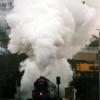Search the Community
Showing results for tags 'raf'.
-

RAF Cark. A remarkable collection of WW2 structures
kevsmiththai posted a topic in Other Hobbies: Games, Simulations, Models & Photography
I've split Cark off from my Surviving Fortifications thread as it is a truly impressive relic of the Second World war. We initially went to get the two WW" pillboxes guarding the shoreline and were totally unaware of the rest of infrastrucure set out on the airfiled itself. this will be a long thread! So. Some background Cark airfield lies on a flat tongue of land immediately north of Morecambe Bay and is flanked by marshes on its south west and south east sides. It was constructed early in 1941 and the site was laid out to support fighter operations in the north west by No.9 Group, Fighter Command, based at Barton Hall, Preston. However, on completion Cark was occupied initially by `F' Flight of No.1 Anti-aircraft Cooperation Unit who used Hawker Henleys and Westland Lysanders for target towing around Morecambe Bay to help train RAF and army gunners. In March 1942 the airfield passed to No.25 Group, Flying Training Command, and became No.1 Staff Pilot Training Unit, in order to train operational aircrews as instructors, with the Avro Anson being used for this task. By mid-1942 `R' flight of No.1 Anti-aircraft Cooperation Unit 1614 Flight was also operating from Cark using Henleys and Bolton Paul Defiants. In December 1942 `F' and `R' Flights were disbanded and immediately reformed as 650 Squadron, re-equipped with Miles Martinets as target tugs and Hawker Hurricane MK IV's. In November 1944 650 Squadron finally left Cark after which the airfield primarily became associated with test flying and the development of remote control target drones. During 1945 the recently formed Mountain Rescue Team moved to Cark. RAF Cark closed on December 31st 1945. The ugly looking Miles Martinet https://en.m.wikipedia.org/wiki/File:Miles_Martinet.jpg Fitted with the somewhat scary wind operated target winch http://burtonstatherheritage.org/image/photo/wind-prop.jpg So we might as well go anti clockwise around the site starting with the two shore line pillboxes This is a typical FW22 one set very low into the shoreline with commanding views over the mudflats. It is very prone to flooding during high tides though More soon Kev

